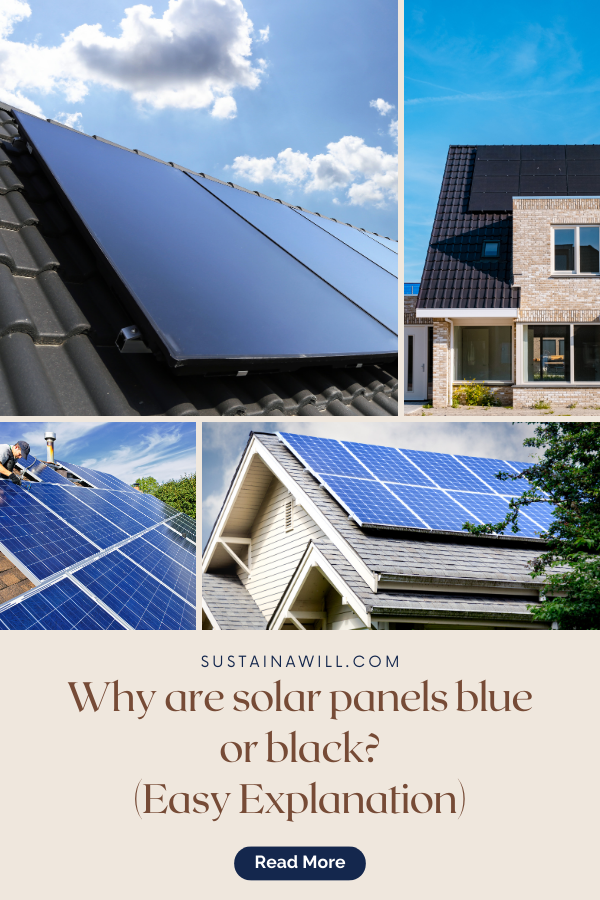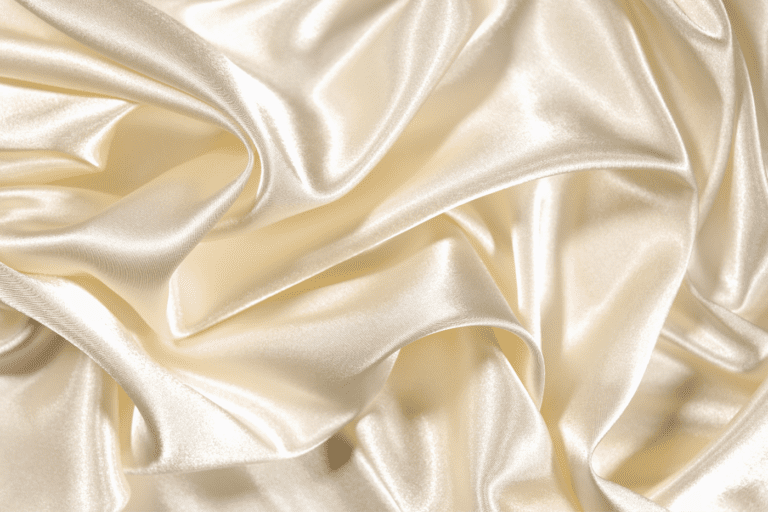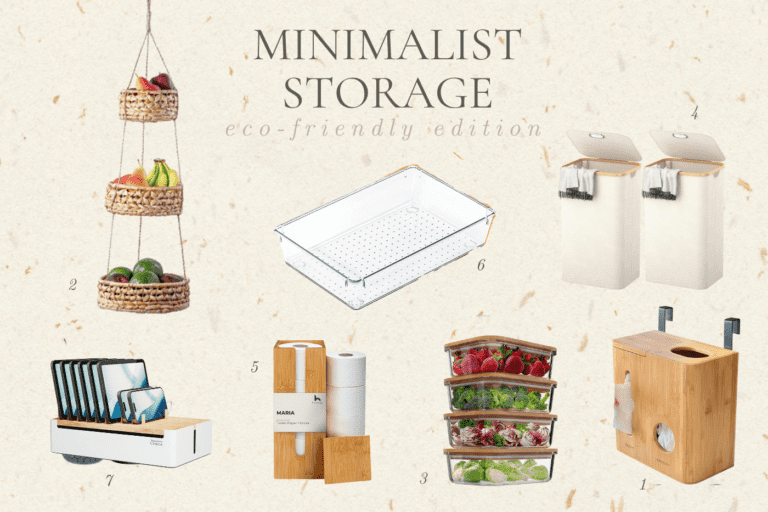Have you ever wondered why solar panels are predominantly blue or black?
Perhaps you’ve considered embracing clean energy but are hesitant due to the impact these panels might have on the visual harmony of your space.
The clash between efficiency and aesthetics is a common concern, and reading on will not only unravel the mystery behind the colors of solar panels but also reveal innovative solutions that seamlessly blend style with sustainability.
What makes solar panels blue or black?
Solar panels can appear either blue or black due to the materials used in their construction, specifically the solar cells and the protective layers.
Blue Solar Panels
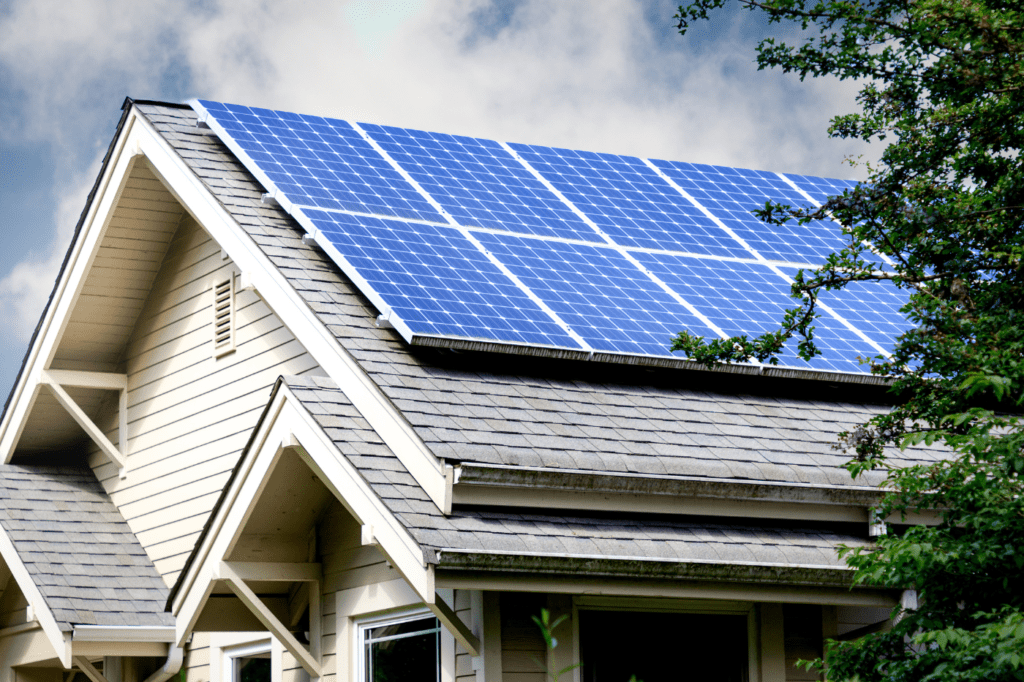
The blue hue in traditional solar panels is primarily attributed to the use of polycrystalline silicon solar cells.
These cells absorb sunlight more efficiently in the blue part of the spectrum, resulting in a distinctive blue color. The anti-reflective coating on the surface also contributes to this appearance.
Black Solar Panels
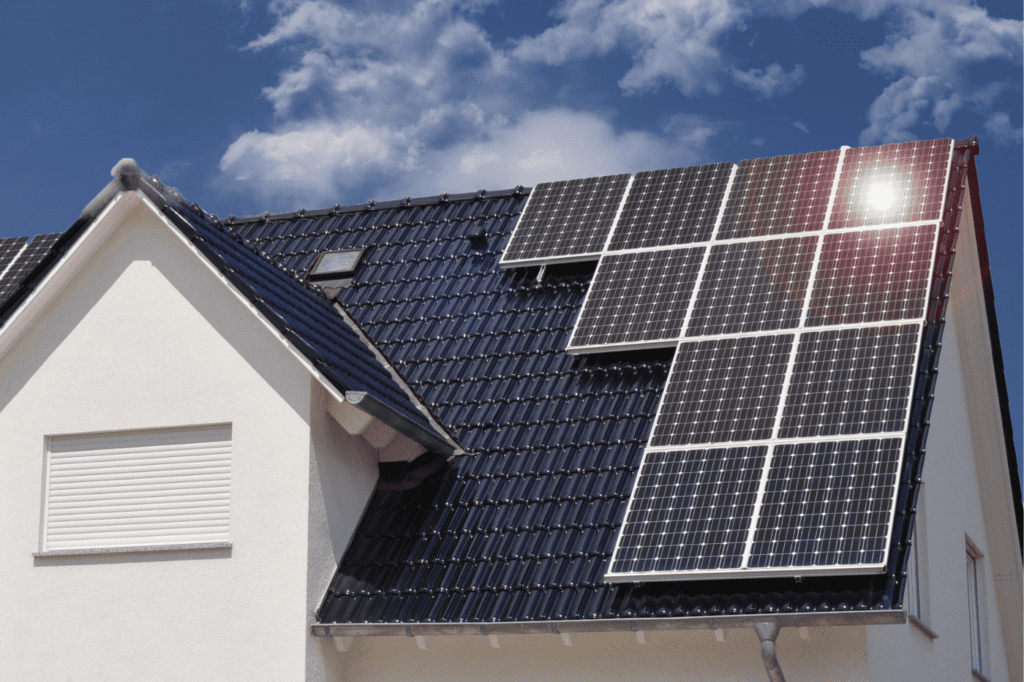
Black solar panels, on the other hand, are often associated with monocrystalline silicon solar cells. These cells are designed to absorb a broader range of sunlight, including both visible and infrared light.
The black color is a result of increased absorption, and these panels may have an enhanced aesthetic appeal, blending more seamlessly with the surroundings.
All-Black Solar Panels
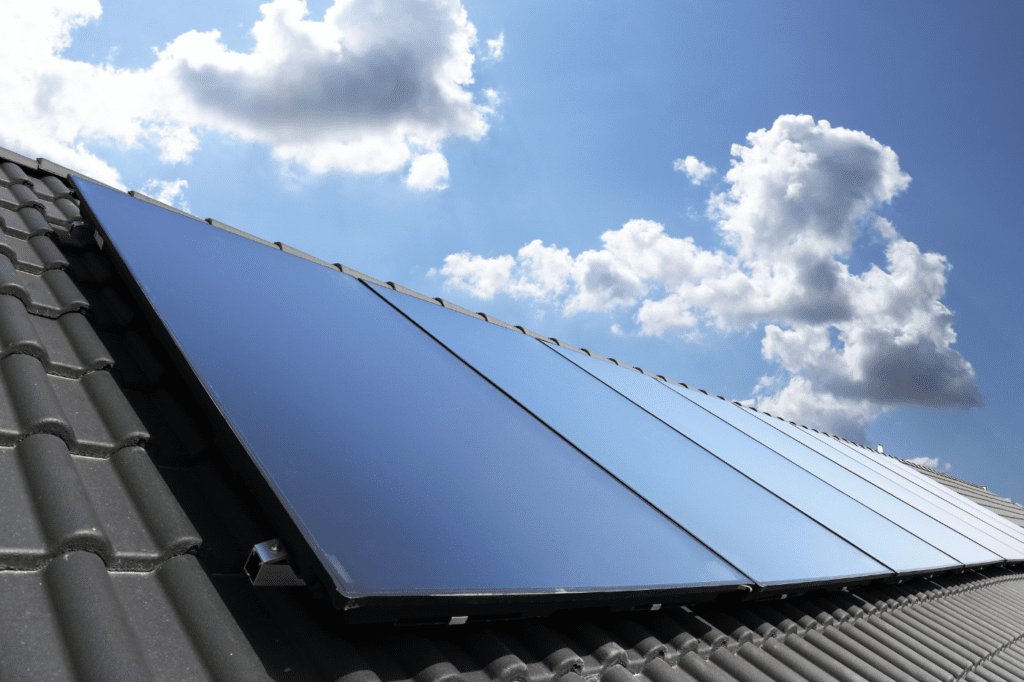
All-black solar panels take aesthetics a step further. In these panels, both the backsheet and the frame are also black, creating a sleek and uniform appearance.
The back sheet is typically made of black material, and the frame, usually made of aluminum, is anodized or coated in black.
The all-black design is popular in residential installations where a sleek and modern look is desired.
Are blue solar panels better than black ones?
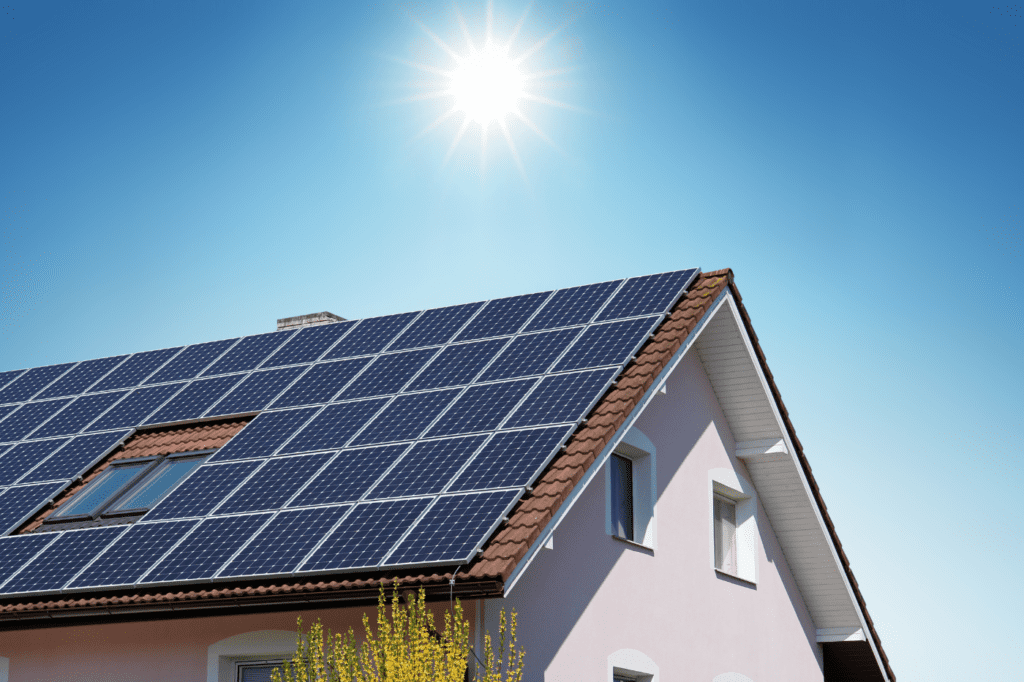
Black vs Blue vs All-Black
The superiority of blue or black solar panels depends on various factors, and the choice often hinges on individual preferences, installation considerations, and specific use cases.
Here’s a comparison between blue, black, and all-black solar panels:
1. Blue Solar Panels
- Advantages:
- Typically more cost-effective compared to black or all-black panels.
- Suitable for installations where aesthetics are not a primary concern.
- Effective performance in various sunlight conditions.
- Considerations:
- May have a less modern or integrated appearance.
- Absorbs sunlight more efficiently in the blue spectrum but may not capture as much of the infrared spectrum.
2. Black Solar Panels
- Advantages:
- Enhanced aesthetic appeal, particularly in residential settings.
- Absorbs a broader range of light, including visible and infrared, potentially leading to a slightly higher energy yield.
- Can dissipate heat more effectively.
- Considerations:
- May come at a slightly higher cost compared to blue panels.
- The improved aesthetics might be a primary consideration for residential installations.
3. All-Black Solar Panels
- Advantages:
- Offers a sleek and uniform appearance with both the back sheet and frame in black.
- Enhanced aesthetic integration, making them popular for residential rooftops.
- Similar benefits in light absorption and heat dissipation as black panels.
- Considerations:
- Typically, it comes at a higher cost compared to both blue and black panels.
- Excessive heat can slightly reduce their efficiency, as they may absorb more heat due to their darker color. This occurs because elevated temperatures increase internal resistance in solar cells, hindering their ability to efficiently convert sunlight into electricity.
FYI
The blue spectrum in sunlight, prevalent during clear days, is efficiently captured by blue solar panels.
The infrared spectrum, more prominent in hotter seasons, becomes crucial for energy capture, with black panels designed to excel in both. This ensures optimal efficiency across diverse lighting and temperature conditions throughout the year.
If you are curious as to how to calculate the output of solar panels, check out our helpful post here.
Verdict: What is the best color for solar panels?
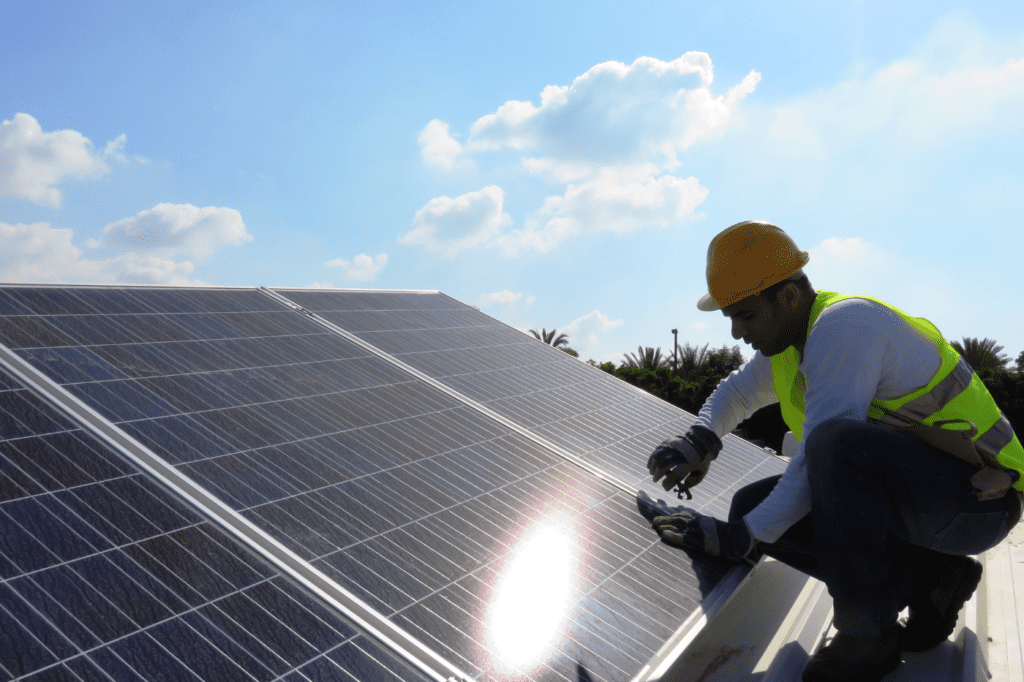
Choosing the Right Panels
- Residential Installations: If aesthetics are a priority and cost is not a significant constraint, all-black panels are often preferred for residential rooftops.
- Commercial Installations: In commercial settings where cost-effectiveness may be crucial, traditional blue panels are frequently used.
- Efficiency: The efficiency of the solar panels is determined by factors beyond color, including the type of solar cells, technology, and overall design. It’s essential to consider the specific requirements of your installation and budget constraints.
- Climate Considerations: In regions with high temperatures, the heat dissipation benefits of black or all-black panels may be a factor to consider.
In Summary
Choosing between blue, black, or all-black solar panels depends on individual priorities, aesthetics, budget, and specific installation requirements.
Each type has its advantages, and the best choice is often dictated by the unique circumstances of the project.
If you are curious as to how many solar panels you need to power your home, check out our helpful post here.
Why are all black solar panels less efficient?
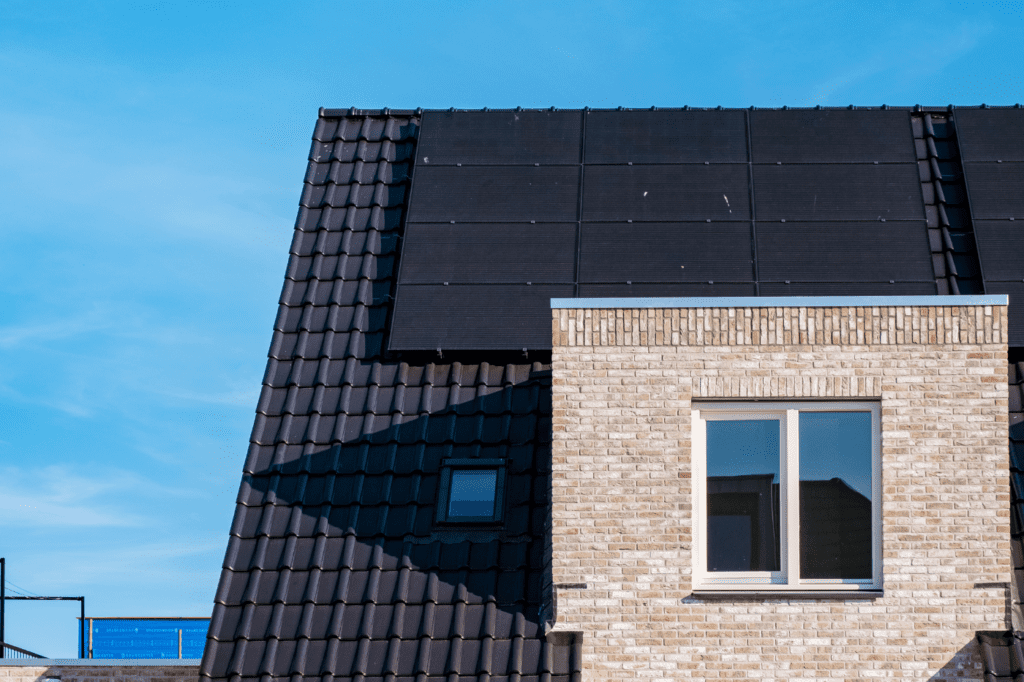
All-black solar panels are not inherently less efficient; in fact, their efficiency is comparable to traditional solar panels.
However, the perception that they might be less efficient can arise due to a couple of reasons:
Heat Absorption
- All-black solar panels may absorb more heat due to their darker color.
- Excessive heat can slightly reduce the efficiency of solar cells, as they operate more efficiently at lower temperatures.
- However, modern solar panel designs often incorporate technologies to manage heat effectively and mitigate any impact on overall efficiency.
Cost Considerations
- All-black solar panels, designed for enhanced aesthetics, may be associated with a higher cost.
- Some consumers might assume that the higher price correlates with increased efficiency, even though the efficiency is primarily determined by the solar cell technology rather than the color.
In Summary
Advances in technology and design have allowed all-black solar panels to maintain comparable efficiency levels, and any perceived differences may be due to factors such as heat absorption or cost rather than inherent limitations in efficiency.
Are there any solar panels in alternative colors?
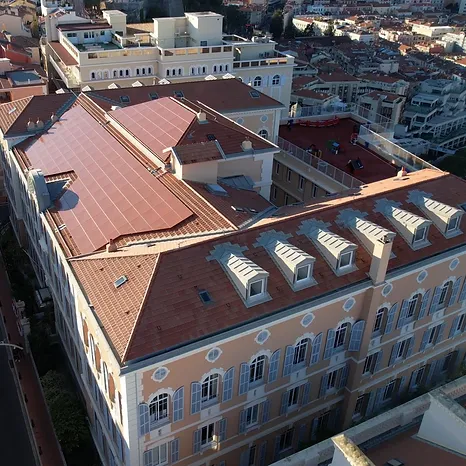
Traditionally, solar panels have a blue or black appearance due to the materials used in their construction, such as silicon solar cells and anti-reflective coatings.
However, there has been ongoing research and experimentation with alternative colors for solar panels.
For Example
Slovenian solar module maker Bisol offers a range of aesthetically diverse solar panels beyond the traditional blue or black.
Their product line includes colors such as Deep Red, Forest Green, Terracotta Orange, and Alabaster White.
You can explore these colorful solar options on their website: Bisol Solar – Premium. This showcases the industry’s efforts to provide solar solutions that not only generate clean energy but also cater to diverse design preferences.
Can solar panels be white?
Yes. While not common, there have been experiments with white solar panels, and some manufacturers also offer white-colored panels.
White panels reflect more light and heat, potentially helping with temperature management and overall efficiency.
Can solar panels be green?
Yes. Green solar panels, in the sense of panels with a green appearance, are not common due to the traditional materials used.
However, the term “green” can also refer to the environmental sustainability of solar panels, which is a different context.
Can solar panels be any color?
And another, yes. Technologically, solar panels can be designed in various colors. However, the challenge lies in maintaining or improving efficiency while altering the color.
Each color absorbs and reflects light differently, affecting the energy absorption capacity of the solar cells.
Research is ongoing to explore new materials and coatings that can efficiently convert solar energy across a spectrum of colors.
Why do people not like the look of solar panels?
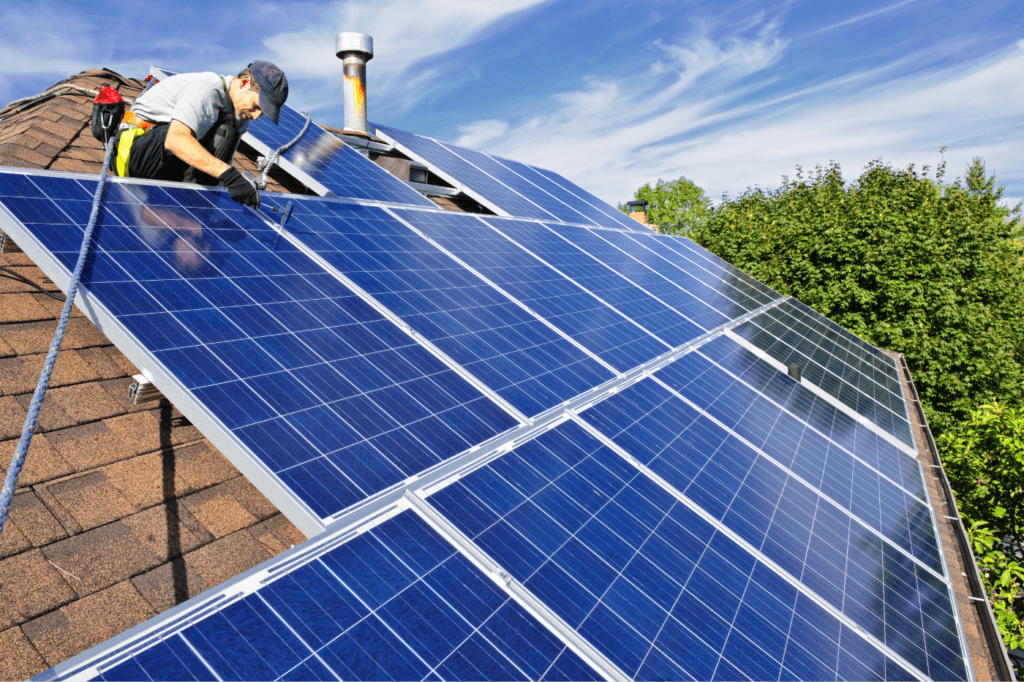
Several reasons contribute to why some people may not like the look of solar panels:
- Aesthetic Concerns:
- Traditional solar panels can be perceived as bulky and less visually appealing, especially on residential rooftops.
- Some people find the blue or black color of solar panels less harmonious with their architectural or design preferences.
- Intrusiveness on Architecture:
- Solar panels alter the visual profile of buildings, and some individuals prefer an unobstructed or traditional appearance for their homes or structures.
- Perceived Complexity:
- The intricate grid pattern on solar panels may be perceived as complex or disrupt the simplicity of a building’s design, leading to aesthetic concerns.
- Reflection and Glare:
- The reflective surfaces of solar panels can create glare, particularly in certain lighting conditions. This glare might be considered distracting or undesirable.
- Unfamiliarity:
- Solar panels are still relatively new in some areas, and unfamiliarity with their appearance can contribute to negative perceptions.
- Cost Perception:
- Some individuals may associate solar panels with higher costs or consider them an investment that doesn’t align with their aesthetic priorities.
- Space Requirements:
- Solar panels require space, and for some, the coverage of a roof or yard with panels may be seen as limiting design possibilities or usable space.
- Cultural or Historical Considerations:
- In some regions, adherence to traditional architectural styles or historical preservation values might lead to resistance against the installation of solar panels.
It’s important to note that these perceptions are evolving as solar technology advances, and efforts are being made to design solar panels that blend seamlessly with architectural aesthetics.
All-black solar panels, color variations, and innovations in panel design aim to address aesthetic concerns and make solar installations more visually appealing to a broader audience.
As awareness grows and designs become more sophisticated, negative perceptions of solar panel aesthetics will likely diminish over time.
Conclusion
If the traditional colors don’t align with your aesthetic preferences, it’s worth exploring new options offered by innovative companies like Bisol, who provide a range of hues.
Your decision to embrace solar power can be a stylish and impactful step toward a cleaner, greener tomorrow.
Ready to make the switch? Explore solar solutions that blend seamlessly with your style, contributing to a brighter and more sustainable future.
